Now on view at the Solomon R. Guggenheim museum through January 11, 2017 is a solo exhibition and retrospective of Agnes Martin’s influential work. Known for her soothing color palette, grids, and geometric lines, Martin was a visionary artist that bridged the Abstract Expressionist and Minimalist movements.
To learn more about Martin’s work, and her current show at the Guggenheim, we spoke with the museum’s Curator Tracey Bashkoff.
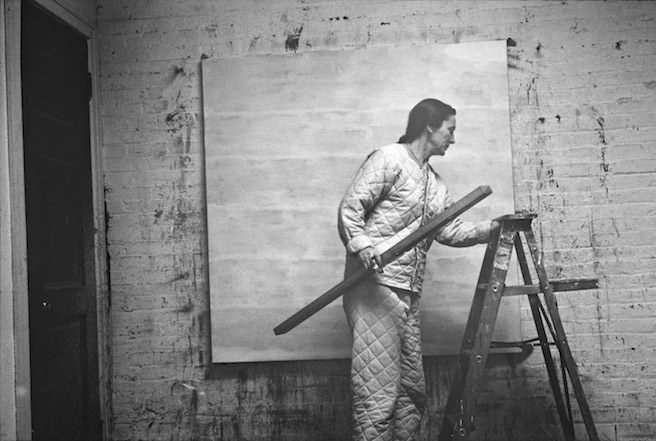
Mid Winter, ca. 1954
WHITEWALL: Why did the Guggenheim decide on showing Martin’s work now?
TRACEY BASHKOFF: Her role in the course of 20th century Abstraction is established, and the last major retrospective of her work was done during her lifetime in the early 1990s by the Whitney, before she died in 2004. First of all, there was another decade of work that wasn’t in that exhibition, so this was an opportunity to bring together the whole breadth of her career—the earlier work, as well as the work that she did until the very end of her life.
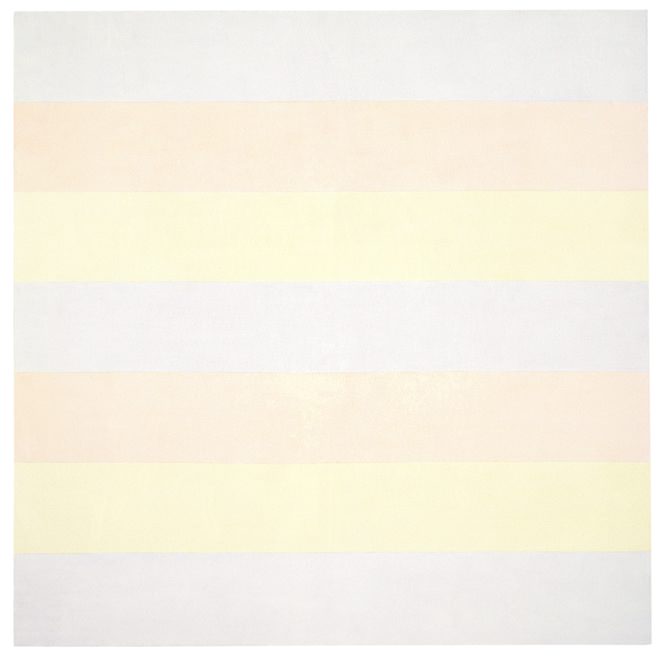
Oil on canvas, 83.8 x 121.9 cm
It’s been 12 years since her death, so it’s also a moment where you can have some historical perspective and look back at her career. While people know her for certain aspects of her work, like the grids or the pastel stripe paintings, this was an opportunity to kind of flush that out a little more and give the full range of her work. She’s a great inspiration to lots of artists and there’s an interest among emerging painters now in Abstraction again, and she has influenced them, as well as musicians and poets, with her lifestyle, her writings, and her paintings.
WW: What about Agnes Martin’s work are you personally most drawn to?

Taos Municipal Schools Historic Art Collection, New Mexico © 2015 Agnes Martin/Artists Rights Society (ARS), New York
TB: I love the detail in the hand of the artist that you see in the works. I love that [the works], perhaps on quick glance appear to be so quiet and empty, and then when you look at them up close, you see the variations of the lines, and even though there are many straight lines, thick and thin. You see lots of little elements she’s put together to give this impression of an overall color to the canvas. I love that handmade depth to the works and how they appear to be two things at the same time. The grids that she did, where you see the pencil over the background color, and the way that it changes how you see the work, is really terrific. I also love the kind of pencil where she’s left in the paintings—the little tick marks where she’s measured out something along the side of the canvas and she used it to line up her straight edge to get those lines. She deliberately left the pencil in there. It’s very intimate. Somehow you feel brought into the process by those touches of pencil, I think.
WW: For over four decades, Martin explored abstract painting, and by 1960 had developed her signature grid paintings. How did this style influence the rest of the artists in her path?
TB: She was born in 1912, which was the same year as Jackson Pollock was born, and so she is of the generation of the Abstract Expressionist painters, whose paintings are much more gestural and full of a kind of frenzy than the quiet works that Martin was producing.She also always maintained that her paintings have emotional content in there—they’re about joy and happiness. And so she felt a part of that generation, but she was also a part of an influence too. The Minimalist artists—that she often showed with, although we don’t consider her a minimalist—were also interested in these types of paired down works, and were interested in repetition and seriality in their work, but they were also interested in removing the artist hand from the work. That’s something that never happens in her work—you always see the hand of the artist.
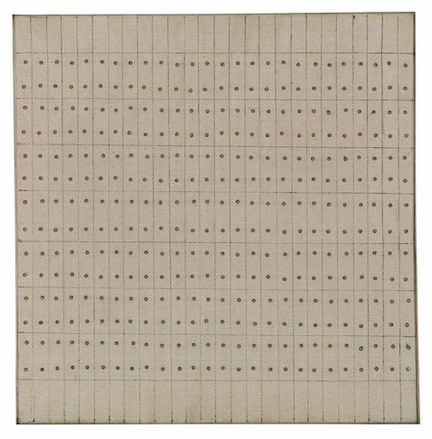
Courtesy of the Solomon R. Guggenheim.
WW: Martin was influenced by her religious upbringing (by her grandfather after her father died), Asian beliefs, cultures, and religions, such as Taoism and Zen Buddhism, and the natural surroundings of her home in New Mexico. What about those influences do you feel is felt or seen in her work?
TB: I think that certainly to speak to the issue of nature in her work—she titled some of her paintings White Flower, A Grey Stone, and Falling Blue, and things that make us think of the natural environment, but they certainly don’t have a one-to-one connection. She’s not trying to literally represent a waterfall, but she takes the ideas and the experiences one has in nature and tried to translate that into the work. I think that’s the difference.
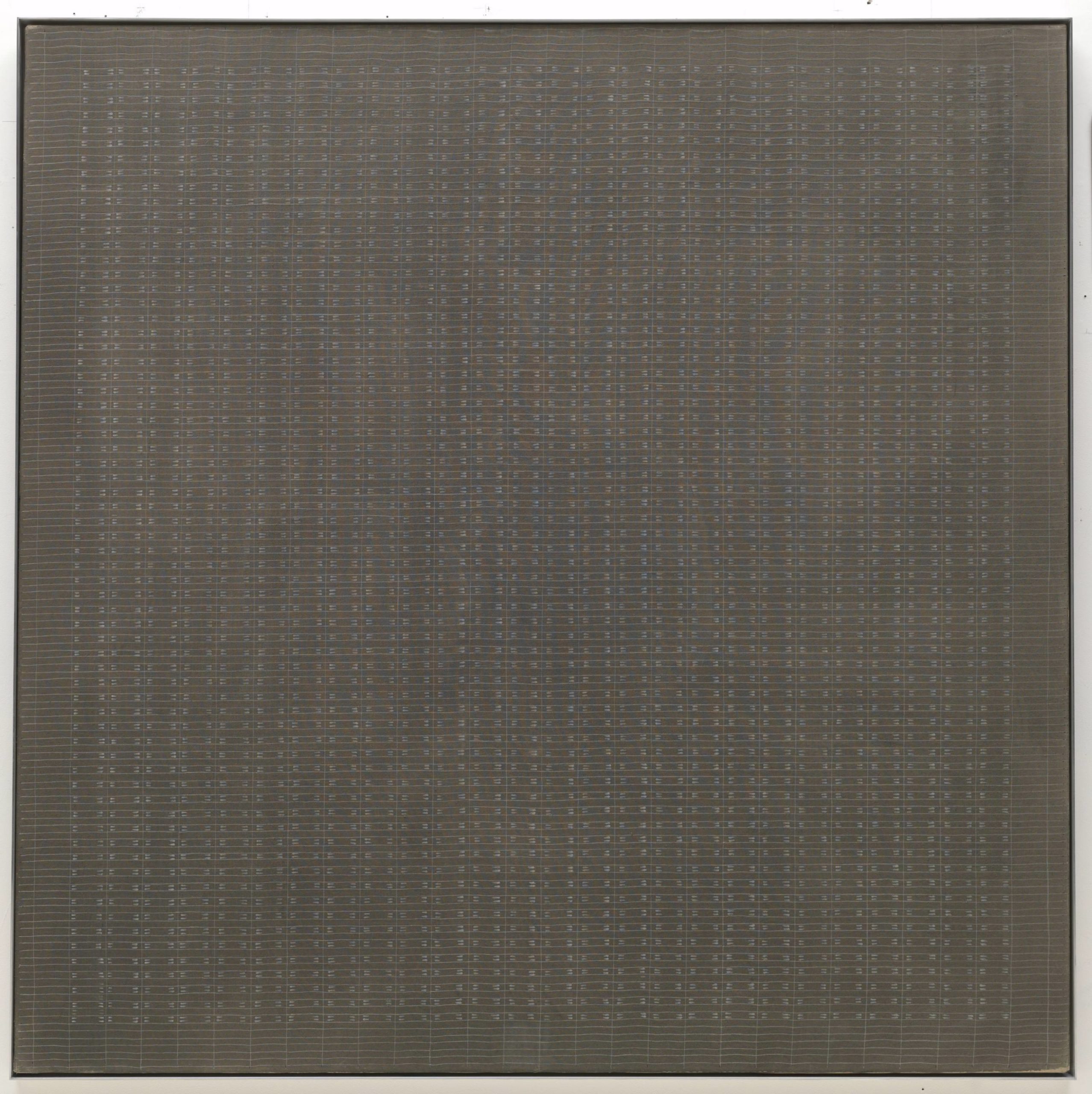
Alexander Liberman, Agnes Martin with level and ladder, 1960. Alexander Liberman Photography Archive, Getty Research Institute, Los Angeles. Photo: © J. Paul Getty Trust
There’s a quote that we have on the wall in the exhibition where she talked about how she looked at clouds and no two of them were ever the same and that they were always different—that they’re the same form, they’re always clouds, but they don’t repeat themselves. She said that’s how life is, and I think that is a little bit of an insight into her work. The works appear to be the same, but are really about what’s different between one and the next, and the idea that that is what it captures—the experience of that, and the lessons you learn from the experiences in the natural world. It’s not really just a painting of a cloud.
WW: What’s your favorite piece in the show?
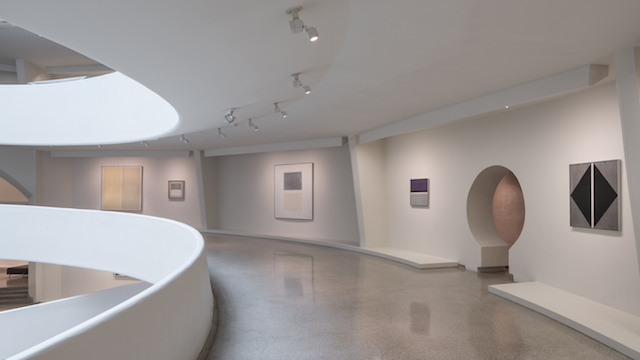
Courtesy of the Solomon R. Guggenheim.
TB: Ohh… There’s a work on the third ramp called A Grey Stone. You think it’s just a grey canvas, and then when you get up there, it’s just made of thousands of little tiny rectangles that each have a dab of paint in them and the first time I saw that painting in person, I was really swept off my feet. The labor that went into it; that experience of changing your view on something and it opening up, and being continuously deep when you get up close to it—it was really moving. It’s one of the reasons you have to come to the museum and see the paintings in person.








